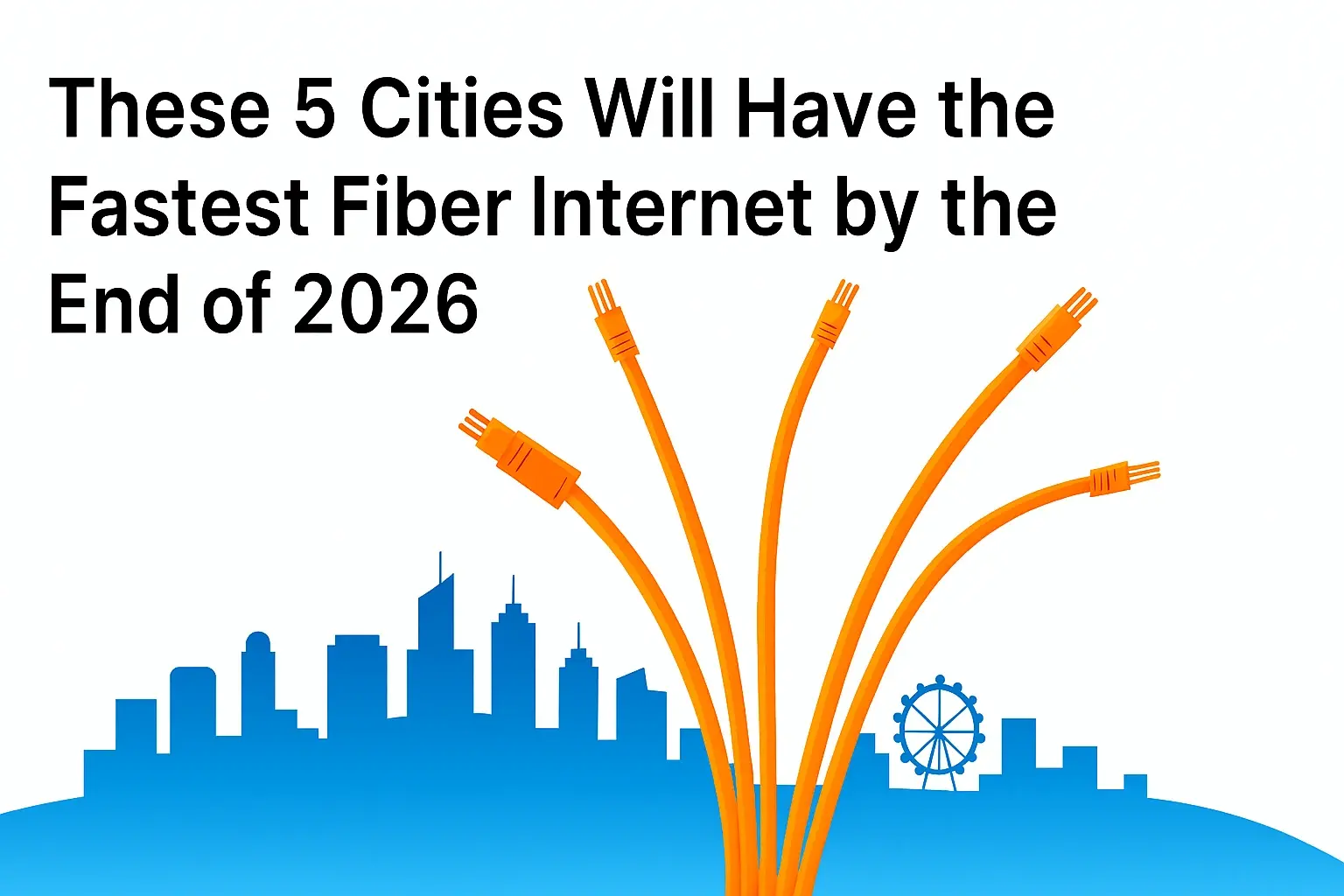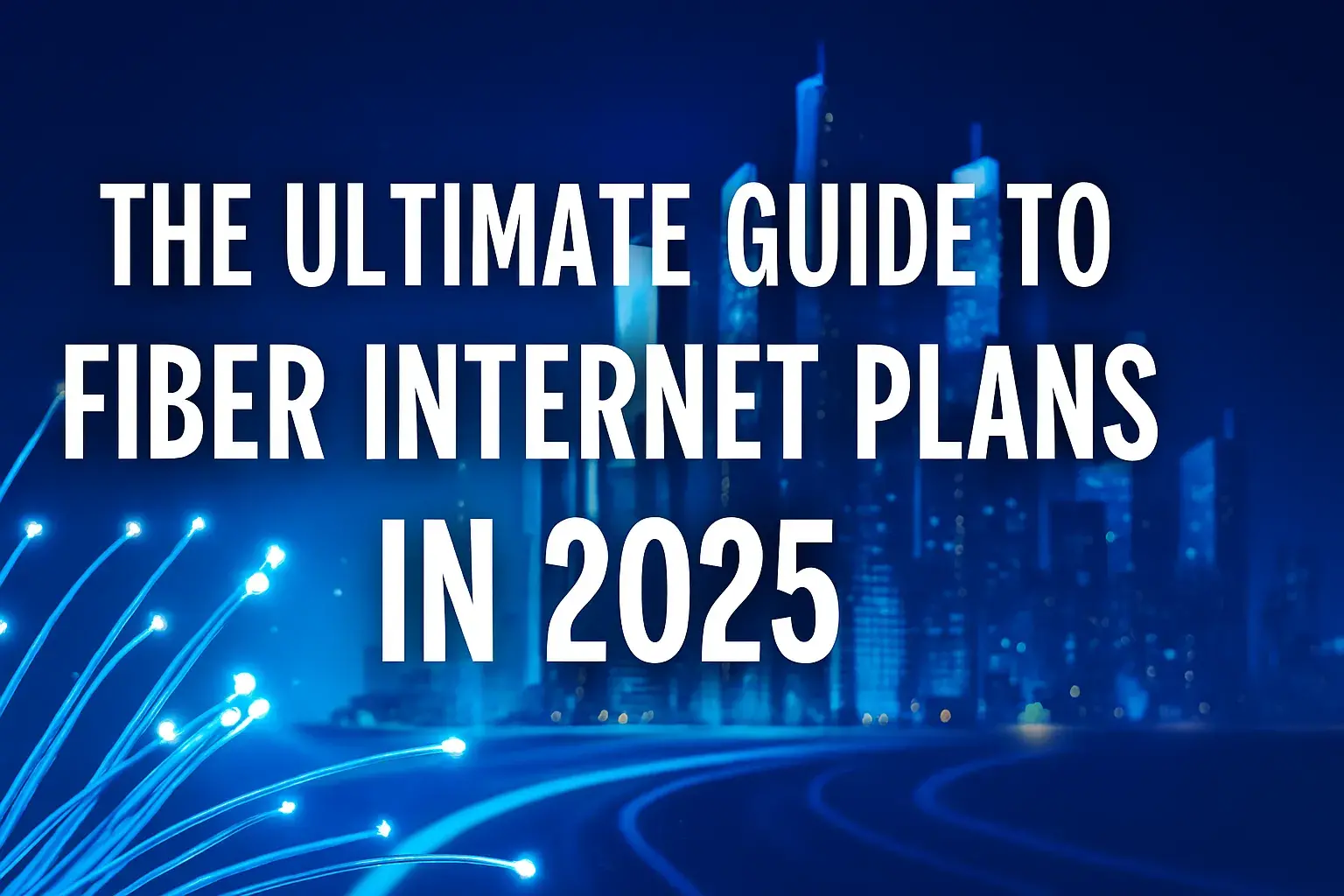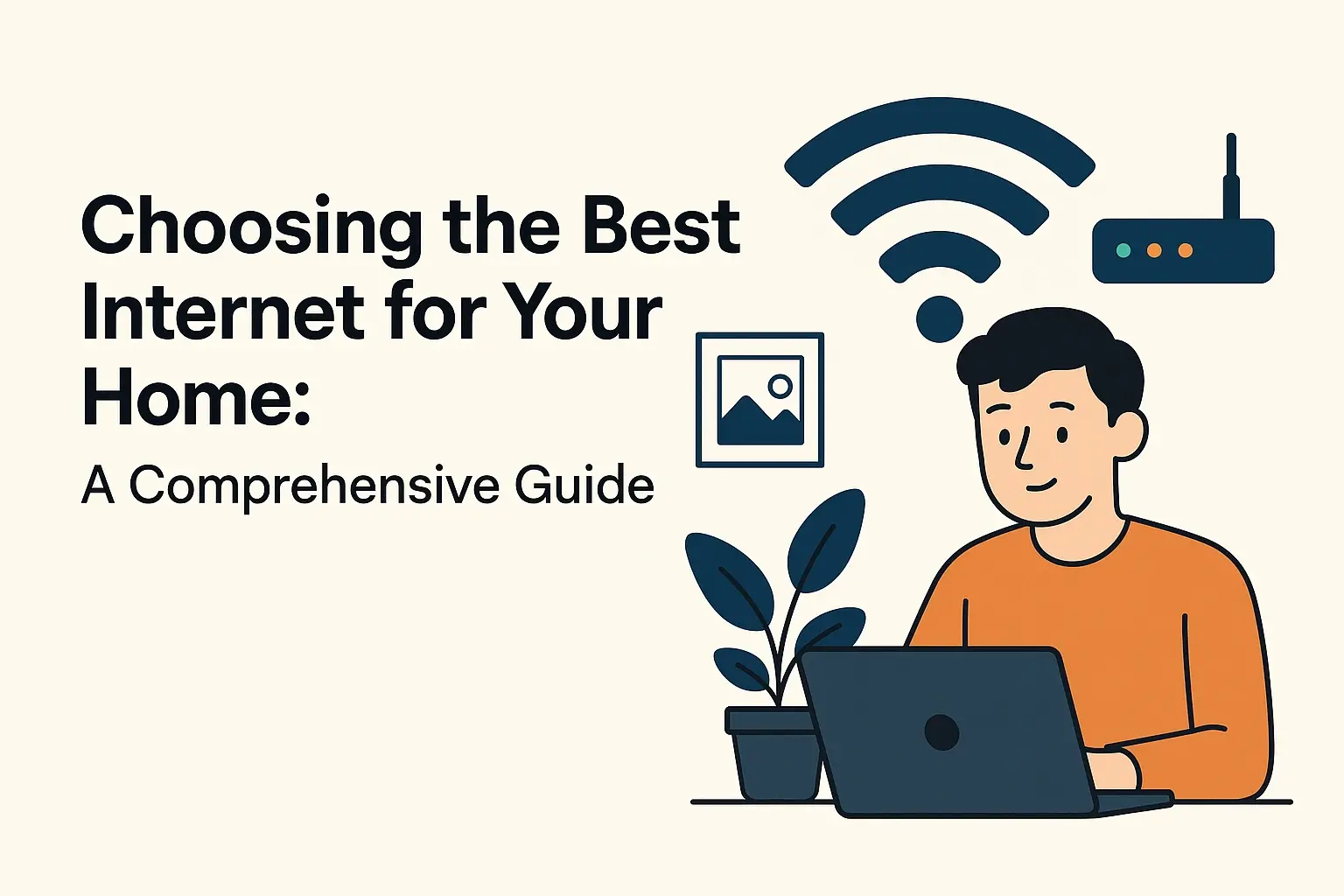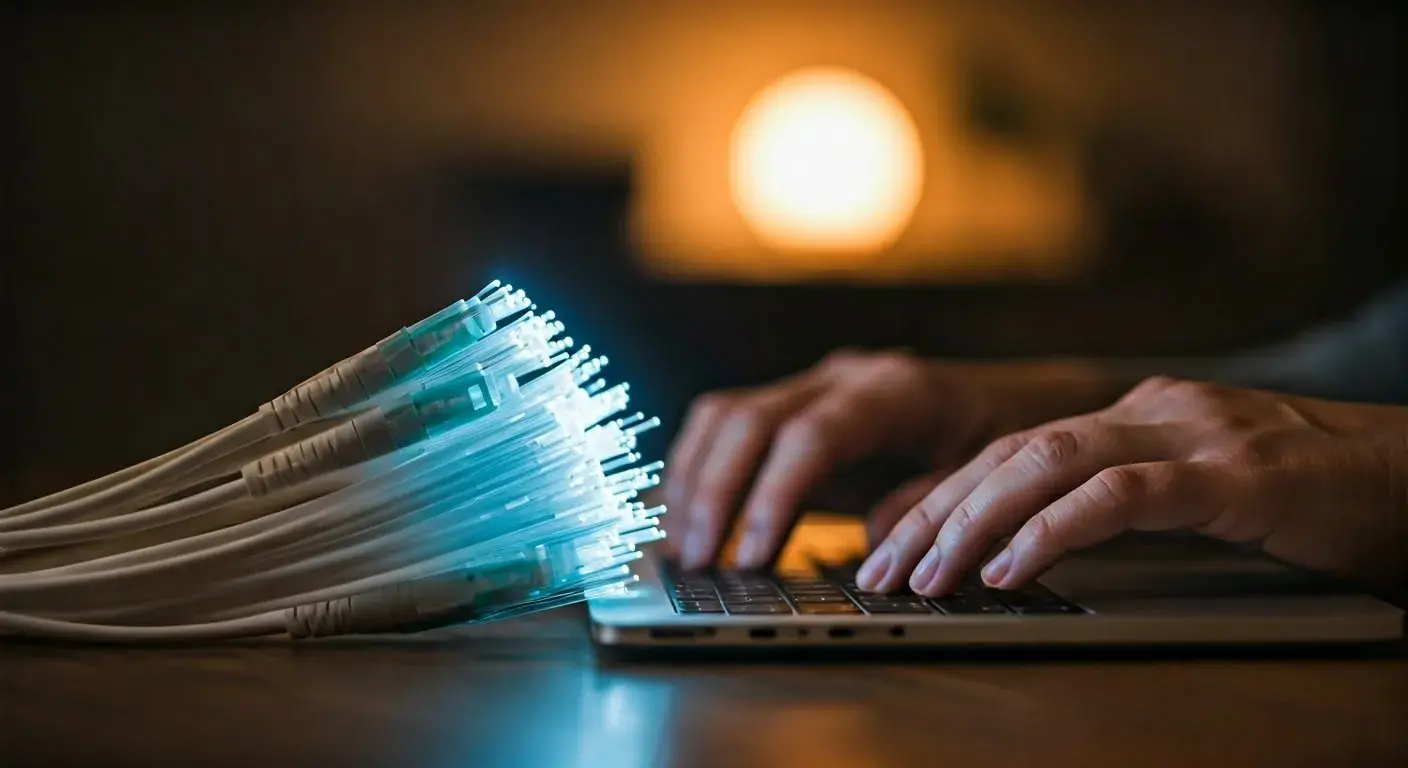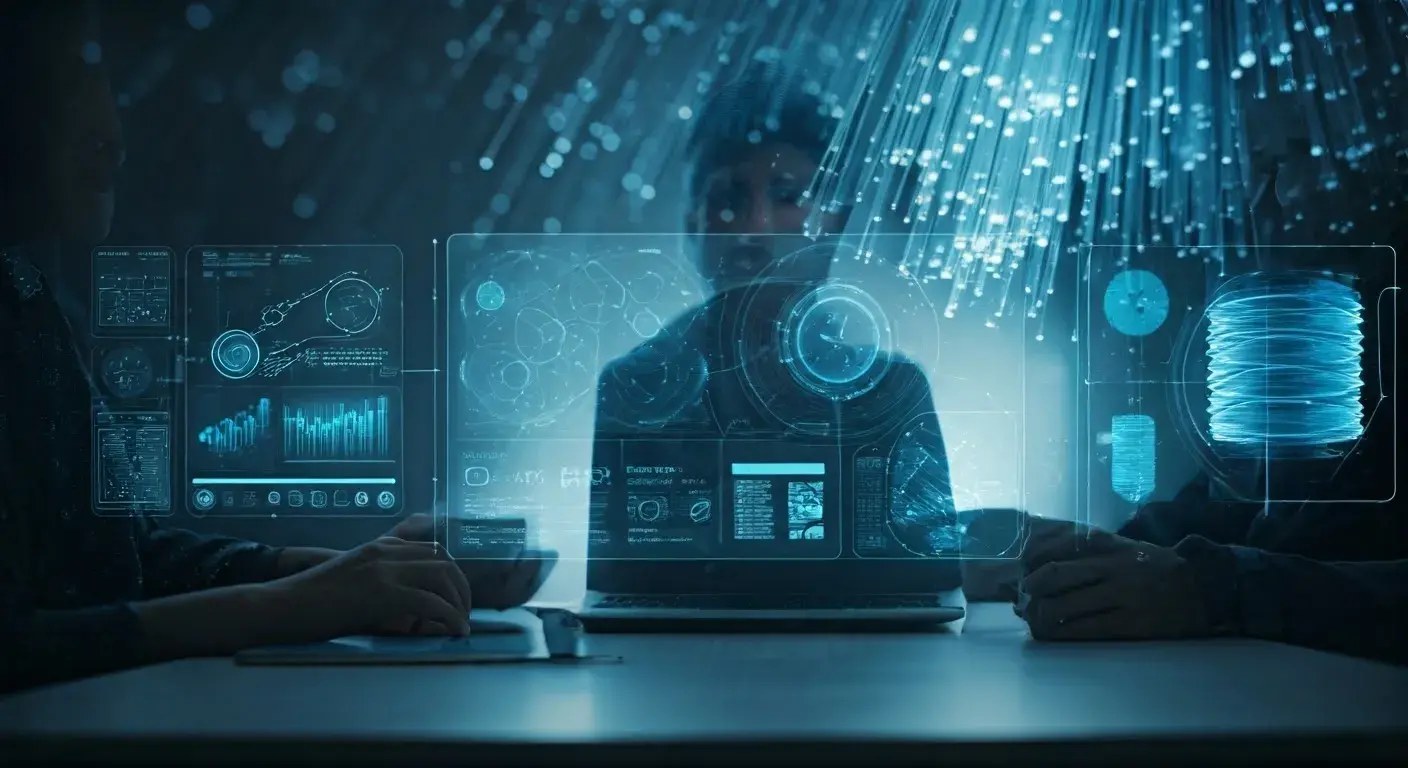Is Fiber Internet always buried?
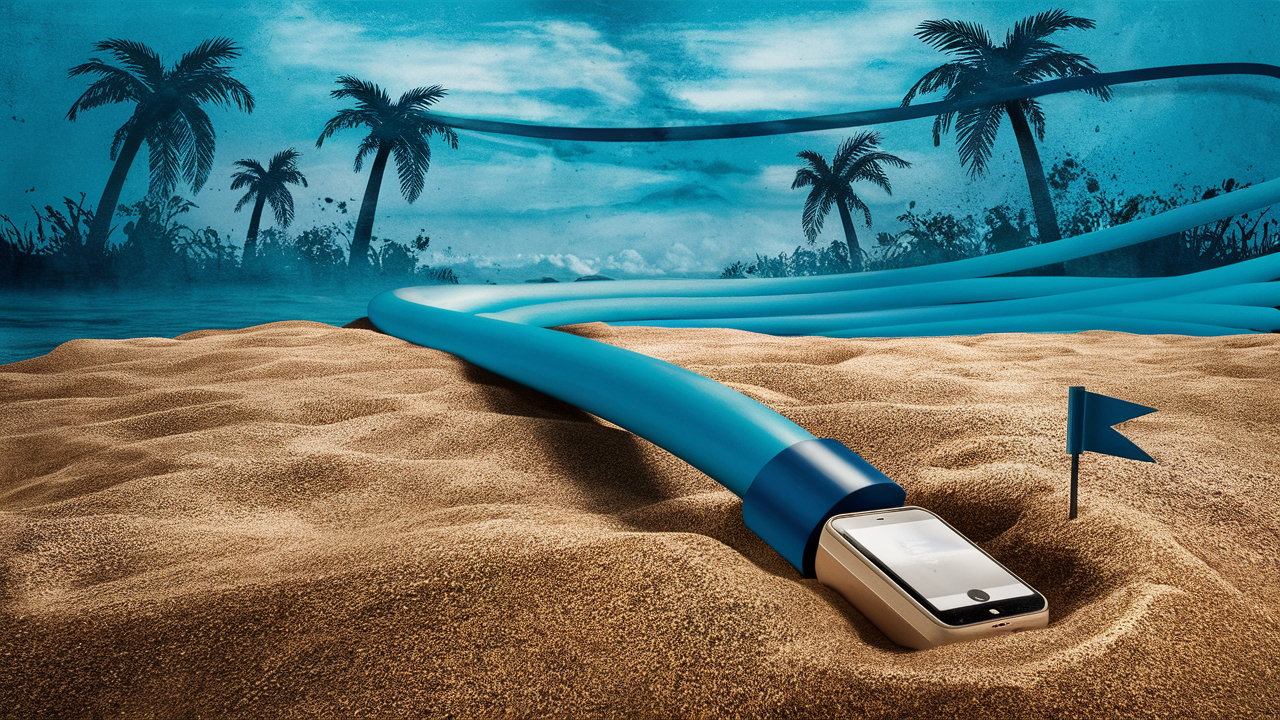
Fiber optic internet, also known as fiber internet, is among the most sought-after options for acquiring a fast connection. However, many people are in doubt about how the fiber internet works and where the cables are located. In this article, we will explore fiber internet infrastructure laydown involving questions such as whether the cables have to be always buried or can be overhead as well. Let's dive in!
How Fiber Internet Works
To answer questions about whether fiber cables are buried, it is essential to understand what fiber internet is and how it operates. Fiber internet transmits information via fiber optic cables, and these are made from thin strands of ultra-pure glass.
These glass fibers are thus some of the thinnest with thickness being far as the width of a human hair. In the internet tools, information goes through them in the form of light pulses from small lasers or LED emitters. Since light travels at a very high speed, fiber internet provides high speed and bandwidth that is unmatched by satellite, DSL, cable, or fixed wireless internet.
The advantage that fiber internet holds over other connection types is that fiber optic cables are made of glass and are not susceptible to electromagnetic interference from the environment. This makes the connections much more dependable and stable because there is less signal attenuation and noise. Fiber cables can also transmit data over very long distances without having to use other devices such as repeaters to amplify the signal.
How Fiber Cables Are Run
This type of Internet connection entails a complex structure to be in place to deliver its services. It is not enough that cables transmit information from service provider locations to other places, such as the homes and businesses of customers. Whereas short fiber lines are still installed overhead on utility poles in residential areas, most long-haul fibers are buried for safety and durability.
When cables cannot be directly buried, they are normally enclosed in a protective conduit that can assist in protecting the ultra-precise glass fibers from physical impact, pressure, water, and temperature changes. Another approach to going wireless is the last mile from the fiber feed to the home network is used often to avoid trenching over private property.
To lay a fiber line to each structure is a tedious process and thus not practical in most rural settings. Nevertheless, the copper wires are still the best, tested, and reliable means of delivering the next generation of broadband internet services to densely populated cities and suburban neighborhoods.
Fiber and Underground Installation
In terms of its definition, the issue of whether fiber internet runs solely underground can be answered by stating that it is always dependent on the provider in question and the extent of the existing facilities. Sometimes fiber internet lines may be: Sometimes fiber internet lines may be:
- Buried entirely underground
- Suspended, then changed to suspended about a third of the span from the ground near the premises.
- Taken from one pole to another, by being borne aloft
- Pull through the existing underground conduit designed for other purposes
In this case, there is no specific procedure on how the fiber should be laid down across the country because the factors that determine the installation include the topography, other existing structures, the density of the population, and even the cost of construction. But the trend is to place the long-haul fiber transmission and place it underground and come above ground only for the last link to the buildings.
Fiber backhaul line deployment between cities and towns may require direct burial, which is normally the least expensive method. It also offers shelter against weather conditions and intruders as well as vandalism. Fiber can be sheathed in what is known as a waterproof conduit and buried several feet under the ground through plowing, that is, without having to dig individual trenches for each fiber.
Costs and Challenges
Regardless of whether fiber optic internet lines are aerial or buried, there are certain issues and peculiarities of their construction. Some cons to underground installation are: Some cons to underground installation are:
- This operation involves trench streets and land, which causes a lot of interruption to traffic.
- Accidentally striking existing buried utilities can be risky/expensive
- Requires special equipment and personnel who are well-trained.
- Cables are not easily accessible in case they have been damaged and require repair work to be done on them.
- Long permitting and construction time is a brake on the speed of rollout
Meanwhile, stringing cables on poles above ground has its issues including Meanwhile, stringing cables on poles above ground has its issues including:
- Cables are exposed to storms, animals, accidents/vandalism
- Areas must be correctly tensioned and lines properly supported
- Is more susceptible to signal loss without protection
- Utility poles still need permits/access rights
- Less suitable for highly populated networks
While constructing more densified cities and racing towards the 5G and IoT convergence smart cities, there will be a combination of using buried and aerial cables to develop fiber networks. The specifics of this approach depend on the existing infrastructure, geographical location, project budgets, and local codes which are very much a consideration for internet service providers.
The Bottom Line
Typically, long-haul fiber lines run in protected conduits on the way between cities while distribution lines to neighborhoods may run overhead from there. Towards subscriber buildings burial through directional drilling, plowing, or trenching is again used.
Thus, although it may not be true globally, most of the fiber internet lines installed today are buried – particularly across long distances. This offers protection as well as future capacity to the delicate glass fiber strands that convey ultra-high-speed data in pulses of light.
Upgrade to faster, more reliable AT&T Fiber Internet today! Call us at +1 844-905-5002 and get connected with speeds that keep you ahead.
